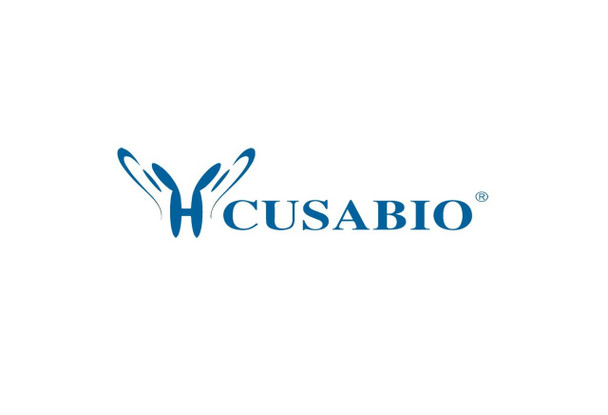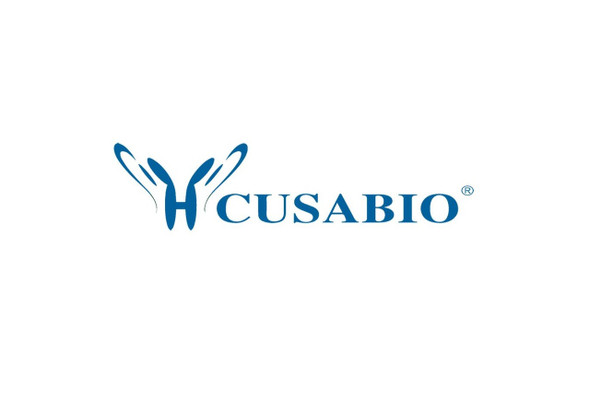Cusabio Mus musculus Recombinants
Recombinant Mouse Histone H2B type 1-A (Hist1h2ba) | CSB-EP010401MO
- SKU:
- CSB-EP010401MO
- Availability:
- 3 - 7 Working Days
Description
Recombinant Mouse Histone H2B type 1-A (Hist1h2ba) | CSB-EP010401MO | Cusabio
Alternative Name(s): Histone H2B, testis (Testis-specific histone H2B) (Th2b)
Gene Names: Hist1h2ba
Research Areas: Others
Organism: Mus musculus(Mouse)
AA Sequence: PEVAVKGATISKKGFKKAVTKTQKKEGRKRKRCRKESYSIYIYKVLKQVHPDTGISSKAMSIMNSFVTDIFERIASEASRLAHYNKRSTITSREIQTAVRLLLPGELAKHAVSEGTKAVTKYTSSK
Source: E.coli
Tag Info: N-terminal 10xHis-tagged and C-terminal Myc-tagged
Expression Region: 2-127aa
Sequence Info: Full Length of Mature Protein
MW: 21.5 kDa
Purity: Greater than 85% as determined by SDS-PAGE.
Relevance: Variant histone specifically required to direct the transformation of dissociating nucleosomes to protamine in male germ cells. Entirely replaces classical histone H2B prior nucleosome to protamine transition and probably acts as a nucleosome dissociating factor that creates a more dynamic chromatin, facilitating the large-scale exchange of histones. In condensing spermatids, the heterodimer between H2AFB1 and HIST1H2BA/TH2B is loaded onto the nucleosomes and promotes loading of transition proteins onto the nucleosomes. Inclusion of the H2AFB1-HIST1H2BA/TH2B dimer into chromatin opens the nucleosomes, releasing the nucleosomal DNA ends and allowing the invasion of nucleosomes by transition proteins. Then, transition proteins drive the recruitment and processing of protamines, which are responsible for histone eviction. Also expressed maternally and is present in the female pronucleus, suggesting a similar role in protamine replacement by nucleosomes at fertilization. Core component of nucleosome. Nucleosomes wrap and compact DNA into chromatin, limiting DNA accessibility to the cellular machineries which require DNA as a template. Histones thereby play a central role in transcription regulation, DNA repair, DNA replication and chromosomal stability. DNA accessibility is regulated via a complex set of post-translational modifications of histones, also called histone code, and nucleosome remodeling.
Reference: "Lineage-specific biology revealed by a finished genome assembly of the mouse." Church D.M., Goodstadt L., Hillier L.W., Zody M.C., Goldstein S., She X., Bult C.J., Agarwala R., Cherry J.L., DiCuccio M., Hlavina W., Kapustin Y., Meric P., Maglott D., Birtle Z., Marques A.C., Graves T., Zhou S. Ponting C.P. PLoS Biol. 7:E1000112-E1000112(2009)
Storage: The shelf life is related to many factors, storage state, buffer ingredients, storage temperature and the stability of the protein itself. Generally, the shelf life of liquid form is 6 months at -20?/-80?. The shelf life of lyophilized form is 12 months at -20?/-80?.
Notes: Repeated freezing and thawing is not recommended. Store working aliquots at 4? for up to one week.
Function:
Involvement in disease:
Subcellular Location:
Protein Families:
Tissue Specificity:
Paythway:
Form: Liquid or Lyophilized powder
Buffer: If the delivery form is liquid, the default storage buffer is Tris/PBS-based buffer, 5%-50% glycerol. If the delivery form is lyophilized powder, the buffer before lyophilization is Tris/PBS-based buffer, 6% Trehalose, pH 8.0.
Reconstitution: We recommend that this vial be briefly centrifuged prior to opening to bring the contents to the bottom. Please reconstitute protein in deionized sterile water to a concentration of 0.1-1.0 mg/mL.We recommend to add 5-50% of glycerol (final concentration) and aliquot for long-term storage at -20?/-80?. Our default final concentration of glycerol is 50%. Customers could use it as reference.
Uniprot ID: P70696
HGNC Database Link: N/A
UniGene Database Link: N/A
KEGG Database Link: N/A
STRING Database Link: N/A
OMIM Database Link: N/A






